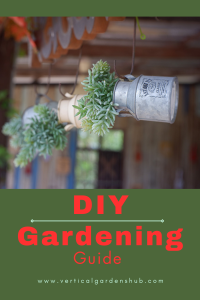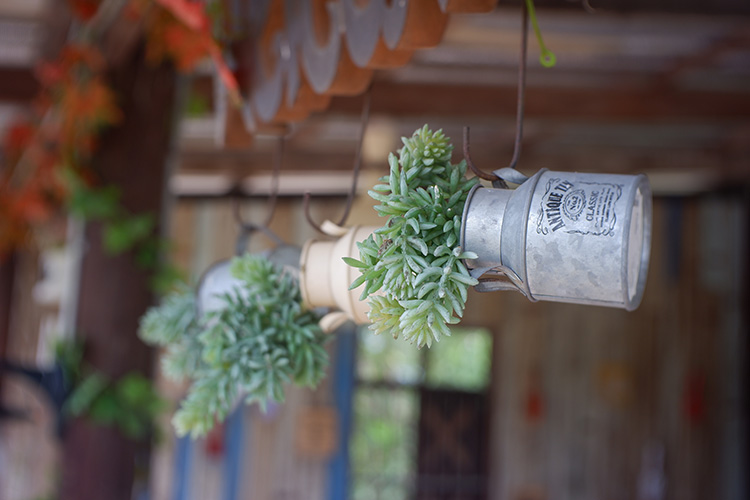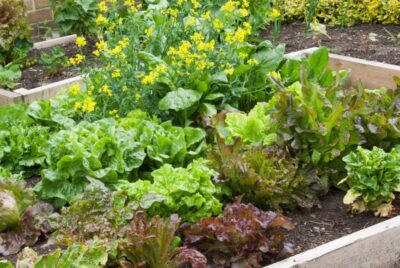DIY Vertical Gardening Guide
Everyone should have the opportunity to experience the joy of gardening, regardless of space limitations. This is where DIY vertical gardening comes in. With a little creativity, effort, and a green thumb, you can build your own vertical garden and enjoy the beauty of nature in even the smallest of spaces.
Benefits of DIY Vertical Gardening
Before we dive into the construction process, let’s explore the benefits of DIY vertical gardening. Building your own vertical garden offers a range of advantages:
- Space Maximization: Vertical gardens allow you to make the most of limited space, whether you have a small balcony, patio, or even just as indoor wall. By utilizing vertical surfaces, you can transform an ordinary wall into a vibrant green masterpiece.
- Enhanced Aesthetics: Vertical gardens add a touch of natural beauty to any environment. They serve as living art pieces, creating a visually appealing focal point and bringing life to otherwise plain walls.
- Improved Air Quality: Plants are natural air purifiers, absorbing carbon dioxide and releasing oxygen. A vertical garden can contribute to a healthier living space by filtering the air and reducing pollutants.
- Easy Access to Fresh Produce: If you choose to grow edible plants, a vertical garden provides access to fresh herbs, vegetables, and even fruits. Imagine plucking fresh basil leaves or cherry tomatoes right from your own wall!
- Reduced Maintenance: Vertical gardens can be designed to require less maintenance than traditional gardens. With planning and plant selection, you can create a low-maintenance garden that thrives with minimal effort.
DIY Vertical Gardening Design Ideas
Now it’s time to explore several design ideas to make your vertical garden unique and appealing. Here are a couple of popular design concepts:
- Vertical Herb Garden: Create a vertical herb garden by planting a variety of aromatic herbs, such as basil, thyme, rosemary, and mint. Enjoy the convenience of fresh herbs right at your fingertips for cooking and garnishing.
- Succulent Wall: Succulents are low-maintenance plants that thrive in vertical gardens. Create a stunning succulent wall by choosing a mix of colorful and textured succulent varieties. These hardy plants will add texture and beauty to your vertical garden.
- Flowering Vine Trellis: Add vertical interest and pops of color to your garden by incorporating flowering vines. Choose climbing plants like clematis, morning glory, or passionflower. They will weave their way up the trellis, creating a vibrant and enchanting display.
Choosing the Right Location
The first step in building your DIY vertical garden is selecting the right location. Consider the following factors when choosing the spot:
- Sunlight Exposure: Many plants require a certain amount of sunlight to grow properly. Determine whether your location receives full sun, partial sun, or shade throughout the day. This information will help you select the right plants for your vertical garden.
- Structural Support: Ensure your location can support the weight of your vertical garden. Walls, fences, or sturdy structures are ideal choices. Avoid locations where your garden might cause damage or instability.
Selecting the Perfect Structure
Once you’ve chosen the location, it’s time to select the structure or form-factor for your vertical garden. Here are several popular options:
- Pallet Wall: Pallets can be repurposed as vertical garden structures. Their slated design provides multiple planting pockets, making them a very cost-effective and versatile choice.
- Vertical Planters: Vertical planters come in various shapes and sizes, allowing you to customize your garden to fit the available space. They typically have multiple tiers or pockets for planting, can be free standing or attach to a structure.
- Hanging Planters: Hanging planters are excellent for small spaces or areas with limited wall surface. They can be suspended from ceilings, railings, or hooks, creating a floating garden effect.
Preparing the Materials
Before you start building, gather all the necessary materials:
- Structure: Depending on the chosen design, gather pallets, vertical planters, or hanging planters. Ensure they are clean, sturdy, and ready for planting.
- Backing Material: If using a pallet or other open structure, consider adding backing material such as landscaping fabric or plastic sheeting. This prevents soil from falling through and maintains a clean appearance.
- Screws or Hooks: Depending on the structure, you’ll need screws or hooks for mounting the vertical garden. Ensure they are appropriate for the wall or surface you are attaching them to.
Building the Frame
When building the frame, follow these general steps:
- Prepare the Backing: If using a pallet, attach the landscaping fabric or plastic sheeting to the backside of the pallet using staples or nails. This will prevent soil from escaping through the gaps.
- Secure the Structure: Attach the pallet or vertical planter to the wall using screws, ensuring it is level and secure. For hanging planters, use sturdy hooks or hangers.
Create the Planting Pockets
Next, it’s time to create the planting pockets for your vertical garden. Here’s how:
- Add a Layer of Landscape Fabric: Line the interior of the structure with landscape fabric, leaving enough excess fabric to cover the soil later. This will prevent soil erosion and promote proper drainage.
- Fill with Soil: Fill each planting pocket with a high-quality potting mix. Ensure the soil can drain well for the types of plants you intend to grow.
Choosing the Right Plants
Selecting the right plants is crucial for the success of your vertical garden. Consider the following factors:
- Light Requirements: Choose plants that thrive in the available light conditions. Some plants require full sun, while others can tolerate shade.
- Growth Habits: Select plants that have a vertical or cascading growth habit, as they will adapt well to the vertical structure.
- Maintenance Level: Consider the level of maintenance you’re willing to commit to. Choose plants that match your lifestyle and time availability.
Planting and Caring for Vertical Garden
Now comes the fun part, follow these steps in planting and caring for your garden:
- Planting: Gently remove the plants from their containers and loosen the root ball. Plant them in the prepared planting pockets, ensuring they are well-spaced and properly supported.
- Watering: Thoroughly water the newly planted garden, ensuring the soil is evenly moist. Monitor the moisture levels regularly and adjust your watering schedule accordingly.
- Fertilizing: Feed your plants with a balanced liquid fertilizer or slow-release granules as needed. Follow the manufacturer’s instructions for application rates and frequencies.
Maintaining Your Vertical Garden
To keep your vertical garden healthy and thriving, follow these maintenance tips:
- Regular Watering: Check the soil moisture regularly and water as needed. Vertical gardens may dry out faster than traditional gardens, so consistent watering is important.
- Pruning and Trimming: Trim and prune your plants regularly to promote healthy growth and maintain the desired shape and appearance.
- Pest and Disease Control: Monitor your plants for pests and diseases. Act at the first signs of trouble to prevent widespread infestations or damage.
Final Thoughts
Building your own DIY vertical garden is a rewarding and creative endeavor that brings nature into your living space. By following these guidelines and considering the suggested plant choices, you can create a stunning wall garden tailored to your preferences and available space. Embrace your inner gardener, get your hands dirty, and enjoy the therapeutic benefits of nurturing living plants in a space of your own making.

FAQs:
Q: Do I need a lot of gardening experience to build a DIY vertical garden?
A: No, you don’t need extensive gardening experience. Beginners and experienced gardeners can enjoy DIY vertical gardening alike.
Q: What are the best plants for a DIY vertical garden?
A: The best plants for a DIY vertical garden are those that have a vertical or cascading growth habit, such as ferns, succulents, herbs, and trailing flowers. Choose plants that suit your available light conditions and maintenance preferences.
Q: Can I build a vertical garden indoors?
A: Yes, vertical gardens can be built indoors as long as you have sufficient light and suitable structures or planters. Consider using grow lights if natural light is limited.
Q: How often do I need to water my vertical garden?
A: The watering frequency depends on several factors, including the types of plants, climate, and the moisture retention capacity of your soil. Monitor the moisture levels regularly and adjust your watering schedule accordingly.
Q: What should I do if my vertical garden is not thriving?
A: If your vertical garden is not thriving, assess the light conditions, watering frequency, and overall plant health. Adjust these factors as needed and/or consult with a local gardening expert if problems persist.





